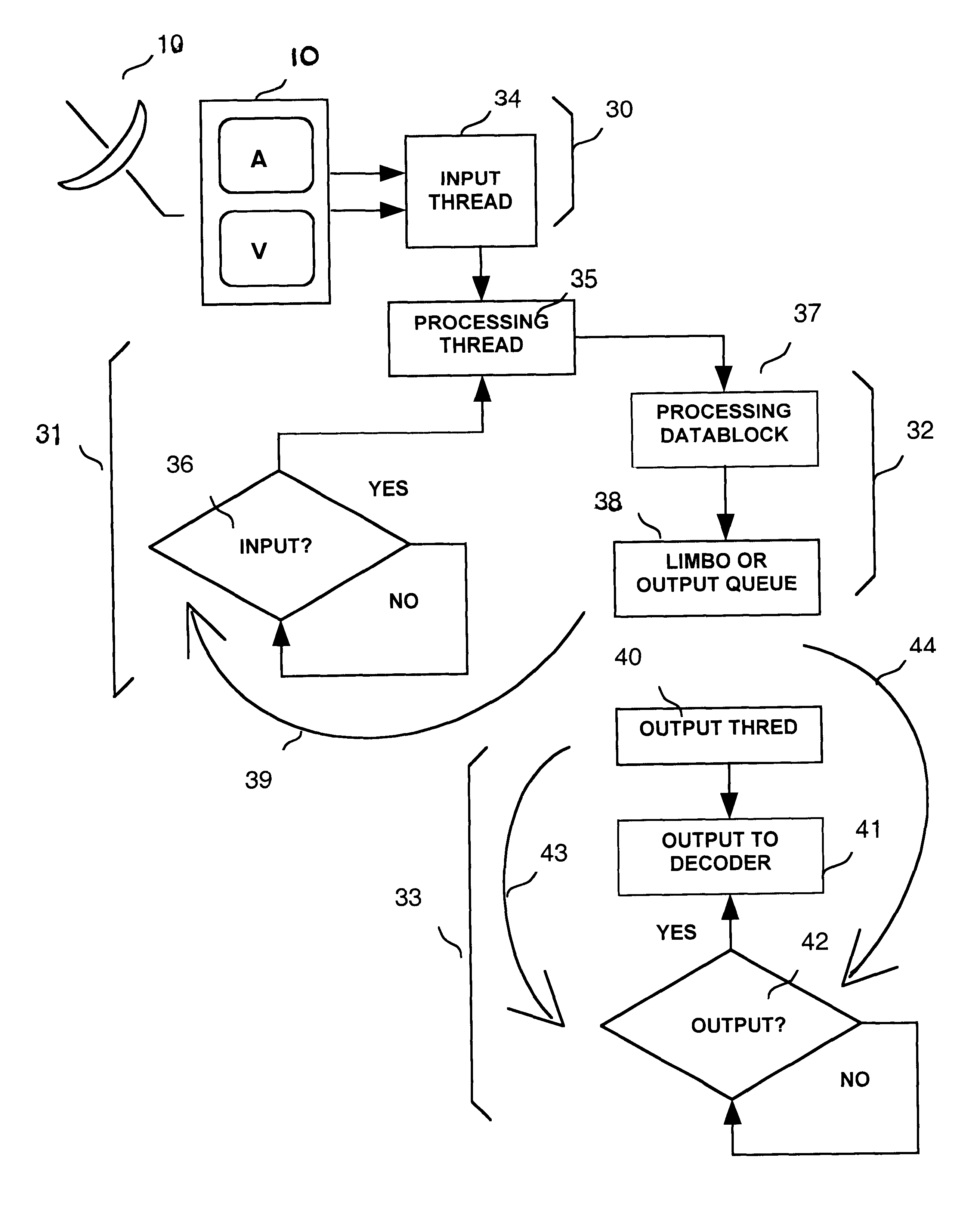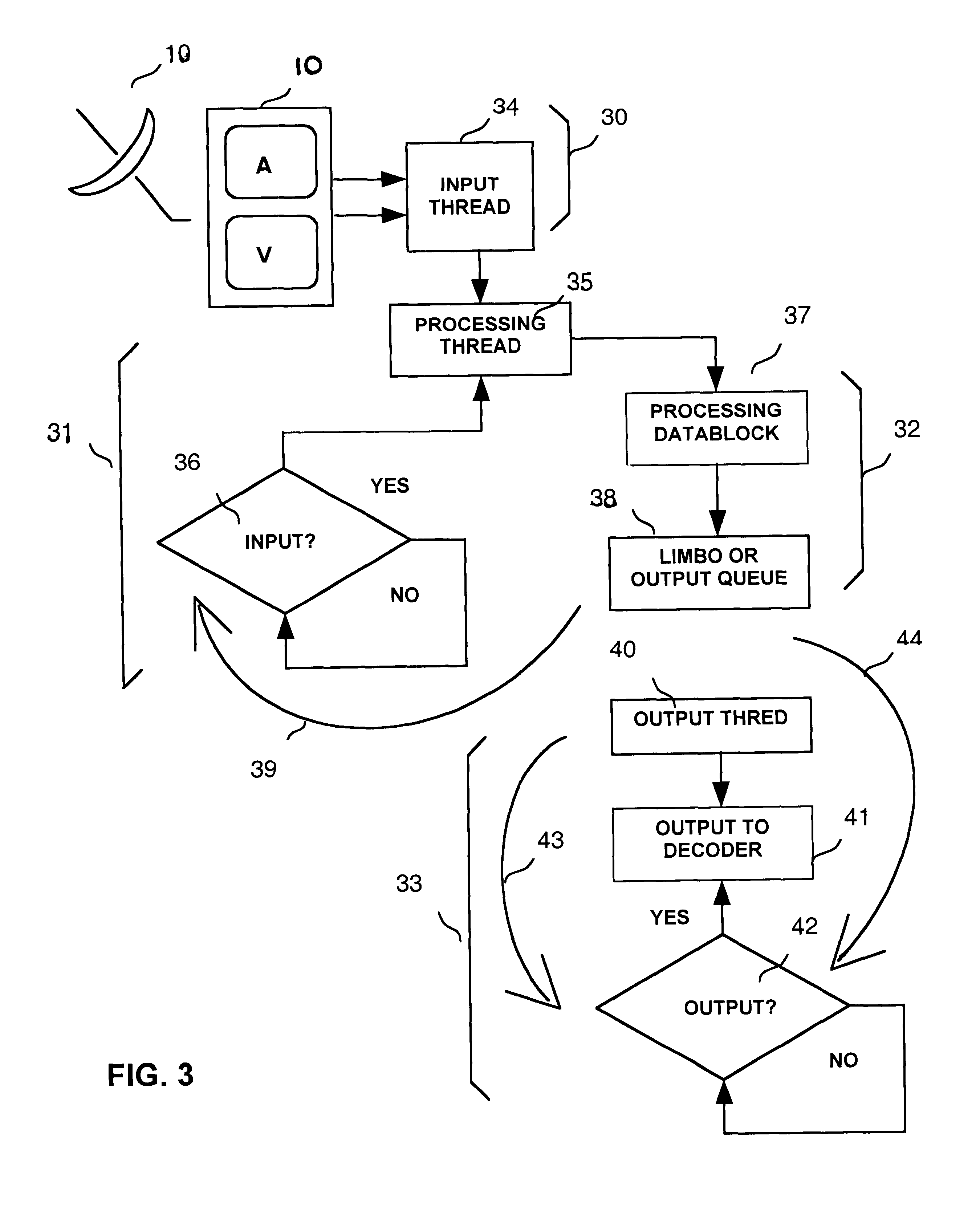Optimal handling and manipulation of high-speed streaming media in a computing device
a computing device and high-speed streaming technology, applied in the field of data processing, can solve the problems of not being able to go back and resample the data as with a dvd, unable to recover from a failure, and presenting significant problems to the device,
- Summary
- Abstract
- Description
- Claims
- Application Information
AI Technical Summary
Benefits of technology
Problems solved by technology
Method used
Image
Examples
Embodiment Construction
The following tables are source code listings C++ implementation of a preferred embodiment of the invention.
Table A is a source code listing of a C++-specific buffer that is recycled for processing data blocks from an input quene and that puts these data blocks on an output quene after processing.
Table B below is a source code listing of a C++-specific implementation of a definition of recycled buffer processing class in Table A.
Table C below is a source code listing of a C++-specific implementation of a definition of global objects used in the system disclosed herein.
Table D below is a source code listing of a C++-specific implementation of a module that oversees data blocks and that keeps track of the data blocks.
Table E below is a source code listing of a C++-specific implementation of a definition for a Data block tracking.
Table F below is a source code listing of a C++-specific implementation of a definition of recycled buffer processing.
Although the invention is described here...
PUM
 Login to View More
Login to View More Abstract
Description
Claims
Application Information
 Login to View More
Login to View More - R&D
- Intellectual Property
- Life Sciences
- Materials
- Tech Scout
- Unparalleled Data Quality
- Higher Quality Content
- 60% Fewer Hallucinations
Browse by: Latest US Patents, China's latest patents, Technical Efficacy Thesaurus, Application Domain, Technology Topic, Popular Technical Reports.
© 2025 PatSnap. All rights reserved.Legal|Privacy policy|Modern Slavery Act Transparency Statement|Sitemap|About US| Contact US: help@patsnap.com



